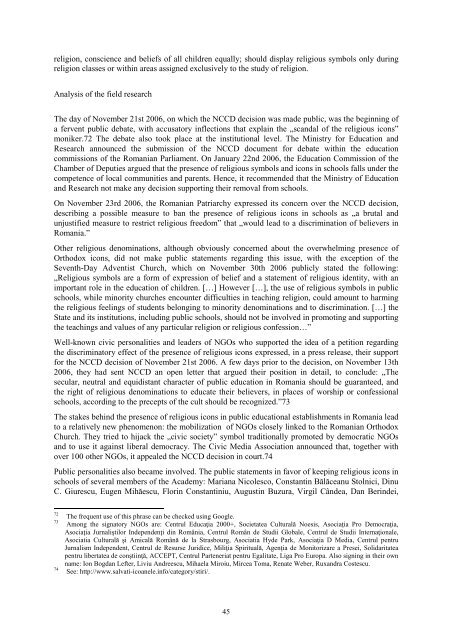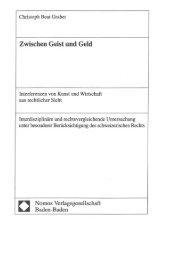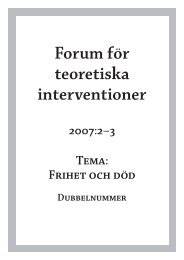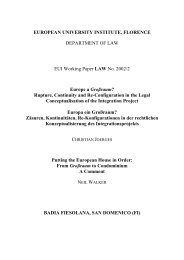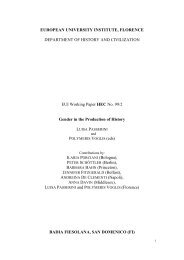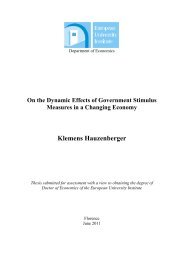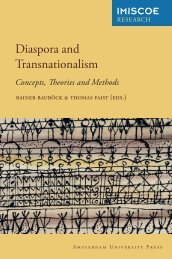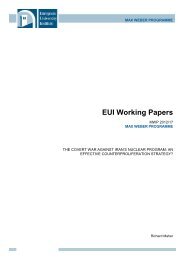Sinziana-Elena Poiana Ioana Lupea Irina-Madalina Doroftei Alina ...
Sinziana-Elena Poiana Ioana Lupea Irina-Madalina Doroftei Alina ...
Sinziana-Elena Poiana Ioana Lupea Irina-Madalina Doroftei Alina ...
Create successful ePaper yourself
Turn your PDF publications into a flip-book with our unique Google optimized e-Paper software.
eligion, conscience and beliefs of all children equally; should display religious symbols only during<br />
religion classes or within areas assigned exclusively to the study of religion.<br />
Analysis of the field research<br />
The day of November 21st 2006, on which the NCCD decision was made public, was the beginning of<br />
a fervent public debate, with accusatory inflections that explain the „scandal of the religious icons”<br />
moniker.72 The debate also took place at the institutional level. The Ministry for Education and<br />
Research announced the submission of the NCCD document for debate within the education<br />
commissions of the Romanian Parliament. On January 22nd 2006, the Education Commission of the<br />
Chamber of Deputies argued that the presence of religious symbols and icons in schools falls under the<br />
competence of local communities and parents. Hence, it recommended that the Ministry of Education<br />
and Research not make any decision supporting their removal from schools.<br />
On November 23rd 2006, the Romanian Patriarchy expressed its concern over the NCCD decision,<br />
describing a possible measure to ban the presence of religious icons in schools as „a brutal and<br />
unjustified measure to restrict religious freedom” that „would lead to a discrimination of believers in<br />
Romania.”<br />
Other religious denominations, although obviously concerned about the overwhelming presence of<br />
Orthodox icons, did not make public statements regarding this issue, with the exception of the<br />
Seventh-Day Adventist Church, which on November 30th 2006 publicly stated the following:<br />
„Religious symbols are a form of expression of belief and a statement of religious identity, with an<br />
important role in the education of children. […] However […], the use of religious symbols in public<br />
schools, while minority churches encounter difficulties in teaching religion, could amount to harming<br />
the religious feelings of students belonging to minority denominations and to discrimination. […] the<br />
State and its institutions, including public schools, should not be involved in promoting and supporting<br />
the teachings and values of any particular religion or religious confession…”<br />
Well-known civic personalities and leaders of NGOs who supported the idea of a petition regarding<br />
the discriminatory effect of the presence of religious icons expressed, in a press release, their support<br />
for the NCCD decision of November 21st 2006. A few days prior to the decision, on November 13th<br />
2006, they had sent NCCD an open letter that argued their position in detail, to conclude: „The<br />
secular, neutral and equidistant character of public education in Romania should be guaranteed, and<br />
the right of religious denominations to educate their believers, in places of worship or confessional<br />
schools, according to the precepts of the cult should be recognized.”73<br />
The stakes behind the presence of religious icons in public educational establishments in Romania lead<br />
to a relatively new phenomenon: the mobilization of NGOs closely linked to the Romanian Orthodox<br />
Church. They tried to hijack the „civic society” symbol traditionally promoted by democratic NGOs<br />
and to use it against liberal democracy. The Civic Media Association announced that, together with<br />
over 100 other NGOs, it appealed the NCCD decision in court.74<br />
Public personalities also became involved. The public statements in favor of keeping religious icons in<br />
schools of several members of the Academy: Mariana Nicolesco, Constantin Bălăceanu Stolnici, Dinu<br />
C. Giurescu, Eugen Mihăescu, Florin Constantiniu, Augustin Buzura, Virgil Cândea, Dan Berindei,<br />
72 The frequent use of this phrase can be checked using Google.<br />
73 Among the signatory NGOs are: Centrul Educaţia 2000+, Societatea Culturală Noesis, Asociaţia Pro Democraţia,<br />
Asociaţia Jurnaliştilor Independenţi din România, Centrul Român de Studii Globale, Centrul de Studii Internaţionale,<br />
Asociatia Culturală şi Amicală Română de la Strasbourg, Asociatia Hyde Park, Asociaţia D Media, Centrul pentru<br />
Jurnalism Independent, Centrul de Resurse Juridice, Miliţia Spirituală, Agenţia de Monitorizare a Presei, Solidaritatea<br />
pentru libertatea de conştiinţă, ACCEPT, Centrul Parteneriat pentru Egalitate, Liga Pro Europa. Also signing in their own<br />
name: Ion Bogdan Lefter, Liviu Andreescu, Mihaela Miroiu, Mircea Toma, Renate Weber, Ruxandra Costescu.<br />
74 See: http://www.salvati-icoanele.info/category/stiri/.<br />
45


